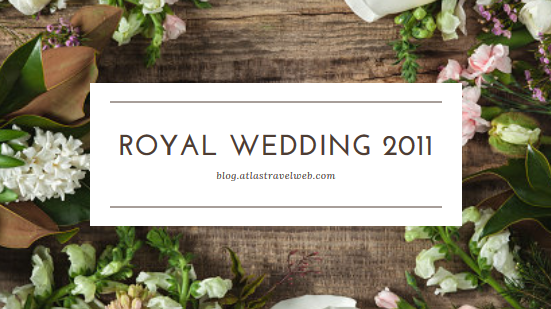It’s just been announced by St James’s Palace that Kate Middleton will travel to the wedding service at Westminster Abbey by car along a route that will include The Mall, Horse Guards Parade, Whitehall and Parliament Square.
It may be a short drive, but the route is rich in landmarks and history.
Originally The Mall was created in the mid-17th century, but the current road dates back to the start of the 1900s, and was designed to be a processional route from Admiralty Arch to the Queen Victoria Memorial, in front of Buckingham Palace.
Closed to traffic on Sundays – so a good time to go there – The Mall has been packed with crowds on many memorable occasions, for example when the Royal Family appeared on the balcony of Buckingham Palace, to mark the Golden Jubilee of the Queen, in 2002; and after Prince William’s own parents married in 1981.
And The Mall is frequently lined with colourful flags from around the world: when there is a State Visit by a head of government, that country’s flags are displayed alongside the Union flag.
Departing Buckingham Palace and travelling along The Mall, one passes close to the royal residences of Clarence House, and St James’s Palace, and between two Royal Parks -Green Park and St James’s Park: the bridge across the lake in St James’s Park is an excellent viewpoint for photos of Buckingham Palace, while Inn the Park restaurant, in the middle of the park, offers a menu of suitably Modern British food, overseen by chef Oliver Peyton.
St James’ Park is also famous for its pelicans: the first “residents” were given by the Russian ambassador in 1664 – and the birds get fed fish daily at 2.30pm. They are apparently gregarious creatures, often joining visitors on the park benches…
From the Mall, the car will turn into Horse Guards Parade, venue for the annual Trooping the Colour ceremony celebrating the Queen’s birthday, which will take place in 2011 on Saturday 11 June: people wanting to take part need to put their name forward for the ballot, before the end of February, and will be notified if they are successful before the end of March (when payment of £25 per ticket is required for those successful in the ballot). There are also “reviews” on the previous two Saturdays, which are also well worth watching for the spectacle and pageantry.
Horse Guards Parade will also be the venue for the beach volleyball events at the London 2012 Olympic and Paralympic Games.
At one end of the Parade, near the junction with Birdcage Walk, is one of London’s most fascinating museums, but one easily overlooked as the entrance is rather tucked away. The Churchill Museum and Cabinet War Rooms celebrates the life and work of one of Britain’s most famous prime ministers, located in the fortified basement from where Sir Winston Churchill directed operations during World War 11.
Whitehall, the road leading from Trafalgar Square to Parliament Square, is at the heart of government, with Downing Street, home of the Prime Minister, leading off it, and government buildings lining both sides of Whitehall. On one side stands the Banqueting House, designed by Inigo Jones and with a stunning ceiling by Rubens, the only remaining part of the old Whitehall Palace.
And finally, before reaching the Abbey, the car will approach one of London’s and indeed Britain’s most iconic sights -Big Ben and the Houses of Parliament. The Palace of Westminster has been Parliament’s home since 1265, but the current buildings date from the 19th century, the Gothic exteriors designed by Sir Charles Barry and the stunning interiors by Augustus Pugin. At one corner stands the most famous of its towers, the Clock Tower, known as Big Ben after its main bell.








